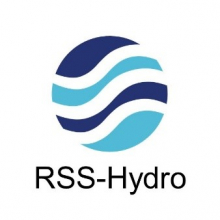Objectives of the service
The aim of the Urban Green Tracker is to provide a dashboard of the health, extent and impact of Green infrastructure within cities. Cities need to understand how their efforts to plant and maintain trees, reduce flood risk, improve air quality and eliminate dangerous urban heat islands are going. The tool will also include high resolution data to measure green infrastructure and liveability at a neighbourhood scale for consumers.
Users and their needs
Project partners are from two sectors – with the Cities of Gent and Antwerp from Belgium representing municipalities and Schroeder & Associates and Demain.lu from Belgium representing consultants who work with government clients. The target user group are municipalities and governments.
The key pain point for municipalities is that the environmental data they have access to is often out-of-date or at an insufficient resolution to be of practical use in monitoring their progress in urban greening and climate adaptation goals. Therefore, the project seeks to determine the feasibility of producing a range of urban green quality and impact indicators, updated on a seasonal or annual basis, and made available on a central portal for a subscription fee.
The use of this data is to understand and optimise urban greening strategies (tree planting, green roof subsidies, reduction in sealed surface strategies), as well to communicate progress to decision makers, elected officials and the general public.
Service/ system concept
The Urban Green Quality Tracker will track measures of urban green to understand how well plans for city greening are tracking over time and which neighbourhoods are greener than others. Furthermore, measures of the environment in a city which are affected by urban green will be measured – including land surface temperature (for urban heat risk) and air quality – as well as measures of the contribution to flood risk.
The urban green indicators will be derived using a data processing pipeline hosted on the AWS cloud service platform. Updated data will be produced automatically on a periodic basis and be uploaded for display on a geoportal or to be directly consumed in client’s internal geodatabases.
Space Added Value
Copernicus Sentinel 1,2,3 and 5P satellite data will be used as the raw data to produce the various technical inputs required for the Urban Green Quality Tracker. Therefore, space data and more particularly regular, affordable and reliable Copernicus data is integral to the project. The primary limitation of the raw datasets is spatial resolution and a variety of machine and deep learning techniques will be used to improve this resolution.
Current Status
The project has completed collection of user requirements with the cities of Gent and Antwerp, as well as with consultants Schroeder & Associates and Demain.lu. Work to determine the economic and technical feasibility of the solution is well underway, with drone data having being collected for verification of satellite-derived results.
Prime Contractor(s)
Subcontractor(s)





